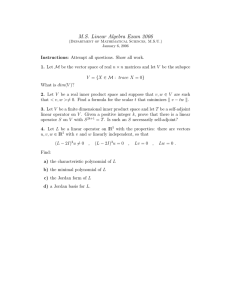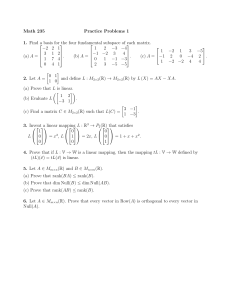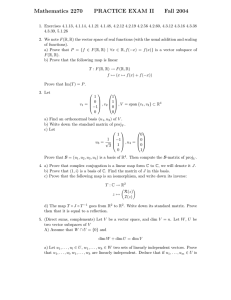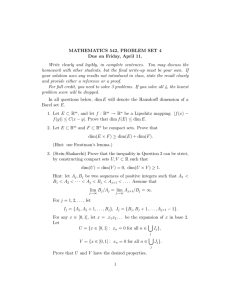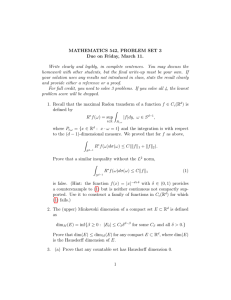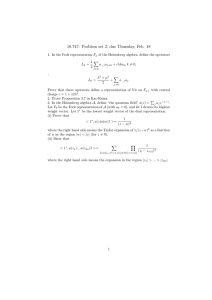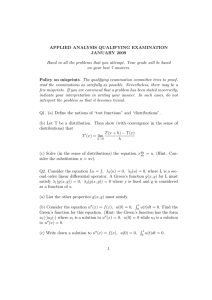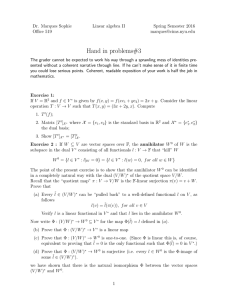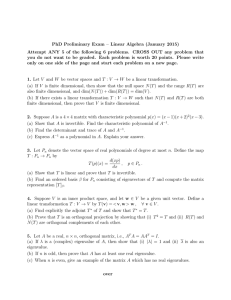MATH 110 WORKSHEET, AUGUST 7TH (1) For each of the
advertisement
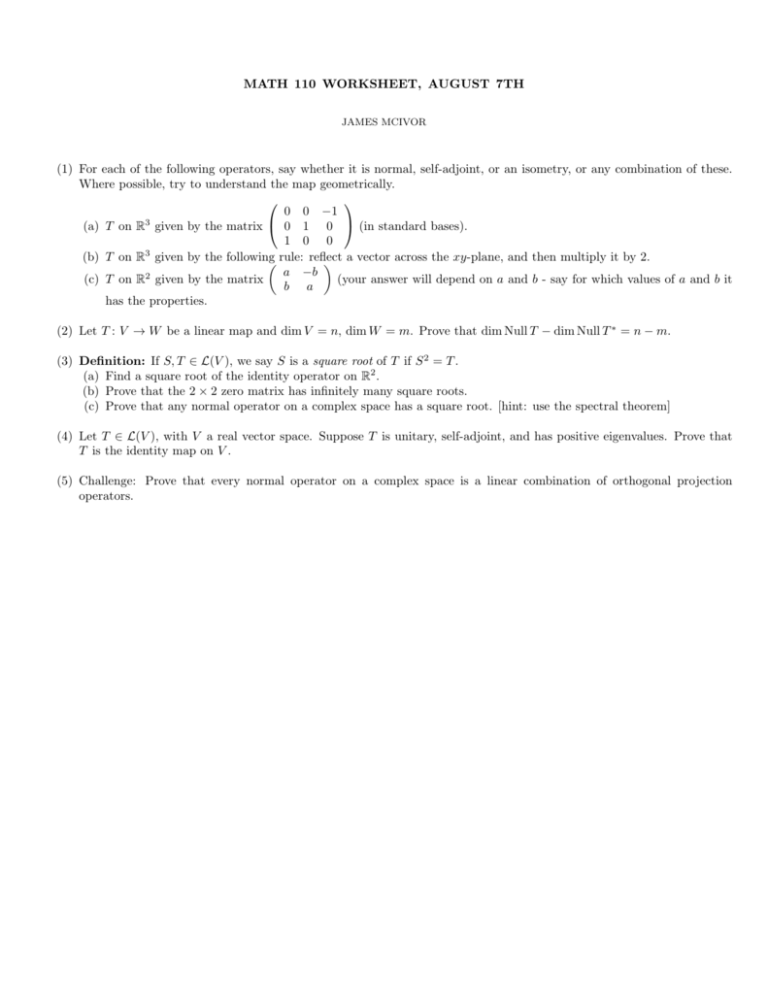
MATH 110 WORKSHEET, AUGUST 7TH JAMES MCIVOR (1) For each of the following operators, say whether it is normal, self-adjoint, or an isometry, or any combination of these. Where possible, try to understand the map geometrically. 0 0 −1 (a) T on R3 given by the matrix 0 1 0 (in standard bases). 1 0 0 3 (b) T on R given by the following rule: reflect a vector across the xy-plane, and then multiply it by 2. a −b 2 (c) T on R given by the matrix (your answer will depend on a and b - say for which values of a and b it b a has the properties. (2) Let T : V → W be a linear map and dim V = n, dim W = m. Prove that dim Null T − dim Null T ∗ = n − m. (3) Definition: If S, T ∈ L(V ), we say S is a square root of T if S 2 = T . (a) Find a square root of the identity operator on R2 . (b) Prove that the 2 × 2 zero matrix has infinitely many square roots. (c) Prove that any normal operator on a complex space has a square root. [hint: use the spectral theorem] (4) Let T ∈ L(V ), with V a real vector space. Suppose T is unitary, self-adjoint, and has positive eigenvalues. Prove that T is the identity map on V . (5) Challenge: Prove that every normal operator on a complex space is a linear combination of orthogonal projection operators.
